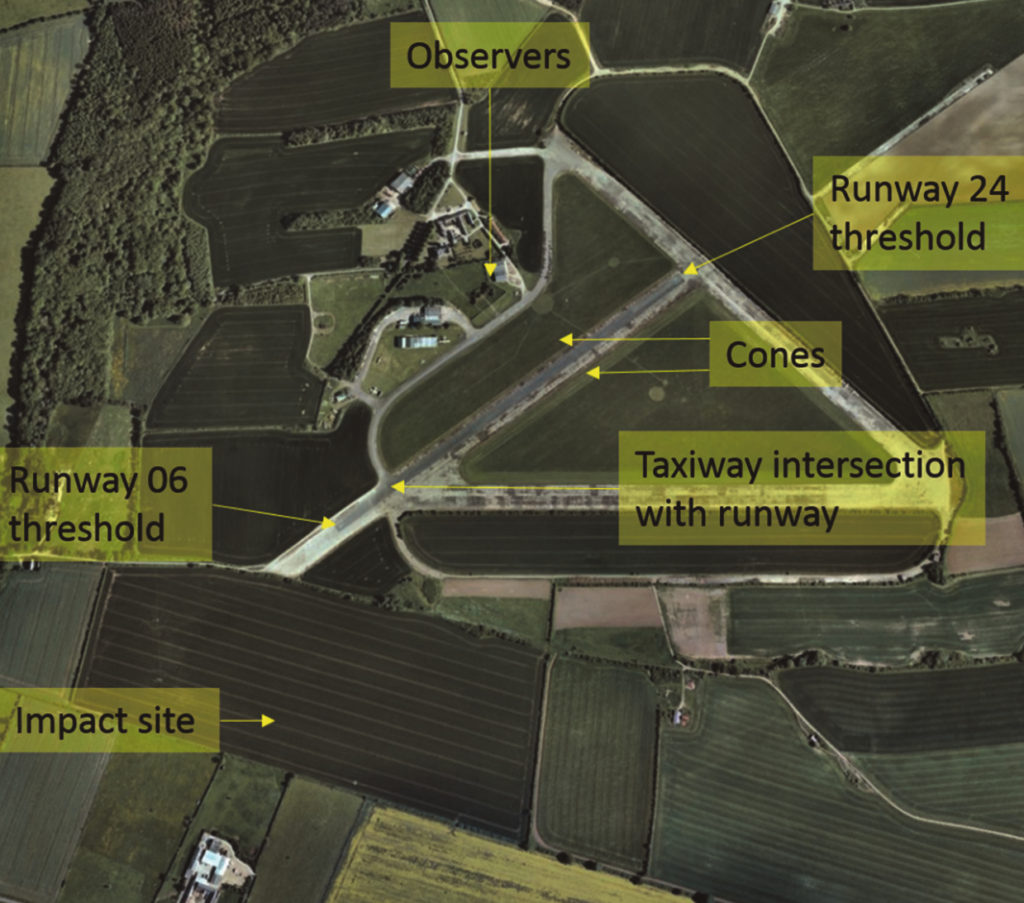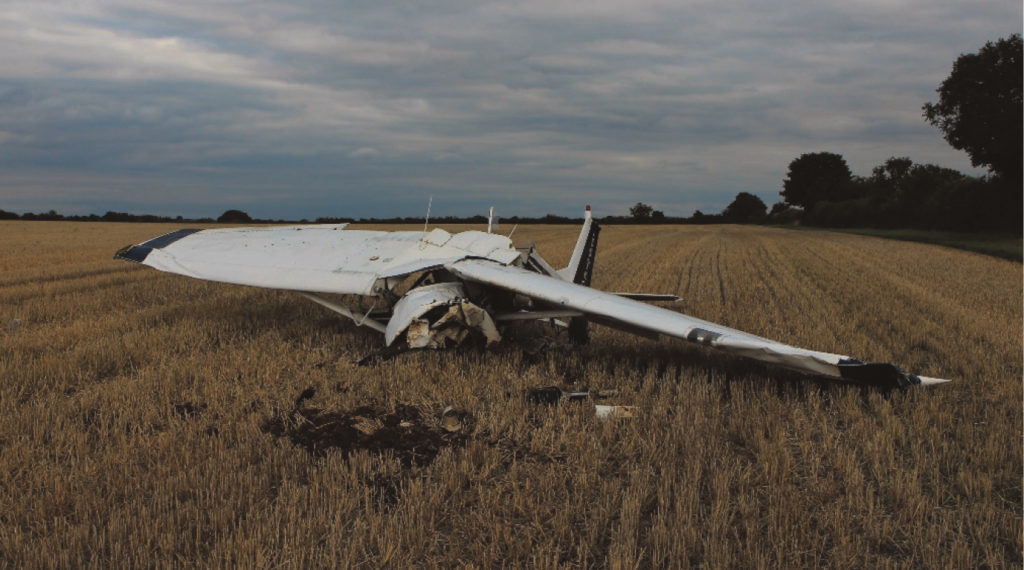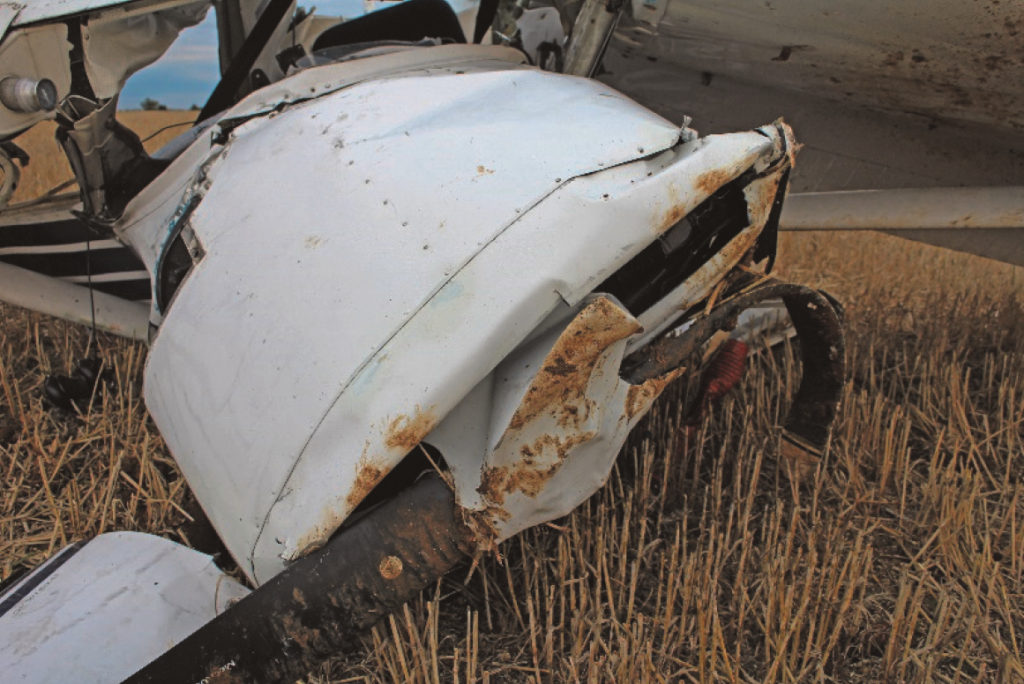The student pilot began flying in June and first flew solo in mid-August after 22 hours of instruction. The student flew nine flights subsequently which included instruction in flying glide approaches. Before the accident flight, the student had flown 27 hours with an instructor and three hours solo.
The pilot had been taught low speed handling, with and without flaps extended, earlier in the PPL syllabus as a prelude to being taught about stalling. Training to handle the aircraft with flaps set to 40° had been limited to a demonstration in which the student was told that, when applying power, the aircraft attitude was to be held steady and flaps raised to 20° in order to prevent the speed from decreasing. The student had been taught not to use 40° of flap to steepen the approach flightpath angle if the aircraft appeared to be high, and the student’s experience of going around had been with 20° or 30° of flap, not 40°.
On the morning of the accident, the student had flown six glide approaches with an instructor. The purpose of the accident flight was solo consolidation of glide approaches. The wind was from 320° at 7kt, there was broken cloud at 4,000ft amsl, visibility of more than 10km and the temperature was 16°C.
The runway used for the accident flight is 700m long and the operator carried out a risk assessment treating the limited runway length as a hazard. The risks identified were: unstable approach resulting in landing too far into the runway; mishandling resulting in a late go-around at low speed; and mishandling following a go-around. Following the assessment, a rule was introduced to instruct solo students to go around if the aircraft’s main wheels were not firmly on the ground by the end of the touchdown zone (TDZ), marked by cones either side of the runway. The student was taught the go-around procedure for approaches flown with 20° or 30° of flap and on one occasion was demonstrated a go-around from an approach with 40° flap.
Touch-and-go landings are not flown because of the limited runway length and, when practising circuits, the aircraft is brought to a halt after landing and then taxied back along the runway to the take-off position for the next take-off.
The student was taught to begin a glide approach on the base leg of the circuit by closing the throttle, flying the aircraft at 65kt and turning onto the runway centreline. The Initial Aiming Point (IAP) at the aerodrome is marked by the cones shown in Figure 1 and the student was taught to go around if the aircraft had not touched down by the time it reached the cones. If the aircraft had touched down by the cones, it could be brought to a halt prior to the next take-off.

Figure 1
People sitting on a raised platform controlling parachute activity at the aerodrome observed the accident. They often watched the accident aircraft (a Cessna 150F) making approaches and they reported that on this occasion it had flown two or three circuits using Runway 24 before the approach which led to the accident. One of the witnesses was of the opinion that the aircraft had a small amount of flap extended as it passed his location (Figure 1). He reported that it touched down on its nose landing gear in line with, or just beyond, two cones which were placed one either side of the runway. The aircraft sat back onto its main landing gear, bounced back into the air and, after floating along the runway, touched down again, left main landing gear first, close to the intersection of the taxiways with the runway marked in Figure 1.
The aircraft appeared to settle onto the runway after which power was applied and it lifted off and adopted a level attitude. The witnesses reported that the aircraft appeared to be flying slowly, heading to the left of the runway centreline and climbing gently, when it began to pitch up steadily into a steep nose-up attitude. One of the witnesses, observing through binoculars, stated that he saw flaps extending as the aircraft was pitching up. The aircraft was observed to bank to the left after which the nose attitude decreased rapidly and the aircraft descended and struck the ground. The solo student received fatal injuries as a result of the ground impact.

Figure 2
Detailed examination
The aircraft is fitted with a simple stall warning system which gives an audio indication to the pilot of the onset of wing stall. The stall warner consists of a small orifice in the leading edge of the left wing attached via a tube to a pneumatic device sensitive to vacuum which emits an audible ‘whistling’ warning tone. The stall warner orifice protective gauze was intact and clear of debris. A test was carried out on the stall warning system and it was found to produce normal tone when subjected to a vacuum.
The elevator trim wheel and its housing had disintegrated and were found loose on the cockpit floor. It was therefore not possible to establish the trim settings prior to the accident. The flap linkages and drive system were at the same setting each side and by measurement of the screw jack extension were found to be at 38° down. This was corroborated by angular measurement on the wing.
Cessna 150F Owner’s Manual
The Cessna 150F Owner’s Manual states:
‘Normal and obstacle clearance take-offs are performed with the flaps up. The use of 10° flaps will shorten the ground run … but this advantage is lost in the climb to a 50-foot obstacle. If 10° of flaps are used … it is preferable to leave them extended … in the climb to the obstacle. Flap deflection of 30° and 40° are not recommended at any time for take-off.’
Engineering analysis
The nature of the crushing and distortion of the propeller spinner and the damage to the underside of the nose cowling suggested an impact angle approximately 15° from the vertical. The wingtip ground marks implied a slight anti-clockwise rotation of the aircraft as it hit the ground. The attitude of the aircraft at impact and the nature of the wingtip ground marks indicated the aircraft had entered a spin.

Figure 3
The damage to the propeller indicates that one of the blades cut into and drew itself deeply into the soil at the point of impact (Figure 3). The extent of the bend of this blade indicates that it was under high power at this point.
Operational analysis
Witness evidence suggested that the aircraft lifted off from the runway at a point beyond the taxiway intersection, began to climb gently and turned left. The left turn was consistent with there being insufficient right rudder input to offset the turning effect of the propeller’s slipstream at low speed and high power.
The aircraft appeared to be climbing slightly until the flaps began to extend to 38° (the maximum setting is 40°). In a high-wing design, such as the Cessna 150, extending flap to its maximum setting tends to cause the aircraft to pitch nose-up and it is likely that, in this accident, this tendency was not controlled by the pilot. The aircraft appeared to have entered a spin to the left, until it struck the ground.
Students had been instructed to go around if they did not touch down by the time they passed the cones positioned on either side of the runway, it was not determined why the student did not go around after bouncing at a point near the cones. Instead, the student applied power once the aircraft settled onto the runway and the aircraft lifted off shortly after.
The flap setting as the aircraft lifted off was not determined, although witnesses reported that the flaps had been extended as the aircraft passed the cones. The aircraft appeared to have been climbing slightly before it pitched up, which would have been unlikely had the flaps been set to 30° or 40°. On balance, it was likely that the flap was set to approximately 10° as the aircraft lifted off.
The student would have been expected to raise the flaps at about the time they were extended. It could not be determined whether the student intended to extend the flaps, or intended to raise them but lowered them in error.
Conclusion
Following the bounced landing, the student pilot applied power and the aircraft lifted off and began climbing gently. For reasons that could not be determined, the pilot extended the flaps but did not control the aircraft’s natural tendency to pitch up as a consequence. The airspeed reduced and the aircraft stalled and began to rotate to the left. There was insufficient height to recover and the aircraft struck the ground in a steep nose-down attitude.
From an AAIB report







